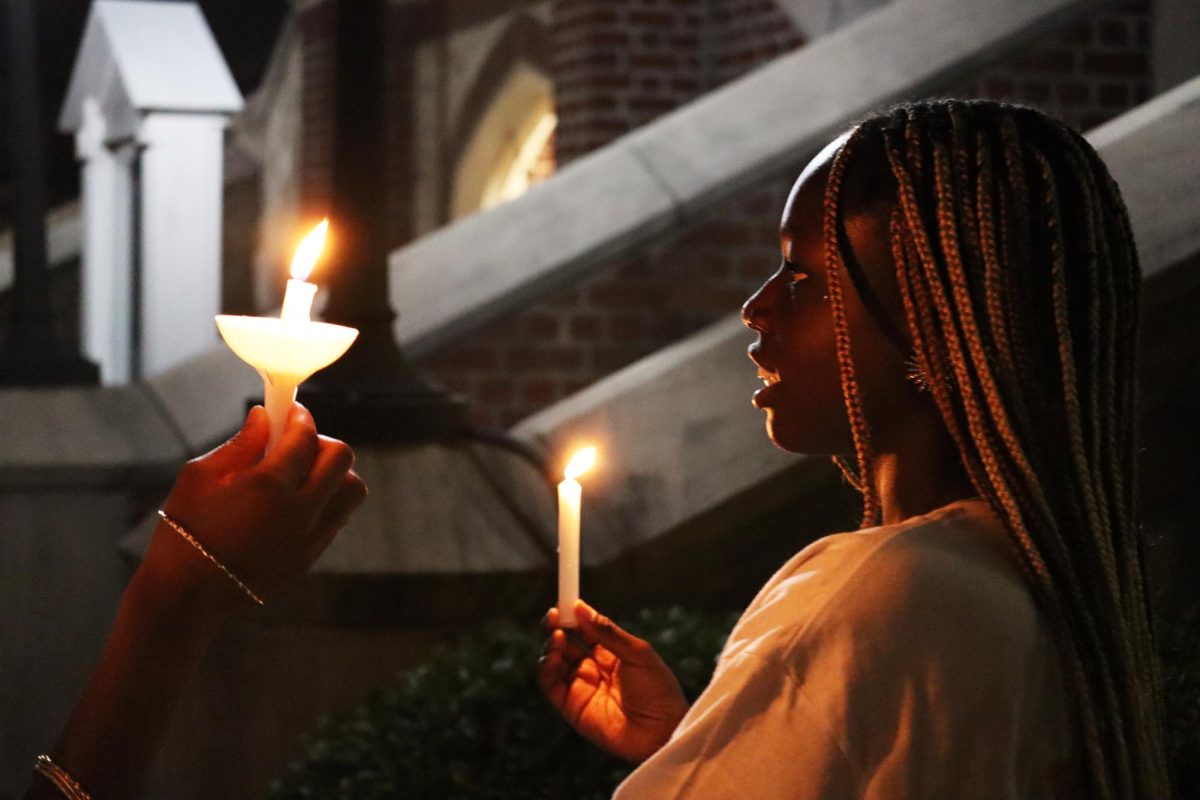While the formidable Munoz Master Plan seeks to change the face of Loyola, the issue of whether the plans will leave paper and come into fruition hinge on the vote of the Board of Trustees – which will most likely adopt only aspects of the plan, and in stages.
Henry Munoz, a Loyola alum from Kell Munoz architecture firm, penned the draft and presented it to the Board during last May’s meeting. While the plan portends big changes for the university, Board of Trustees chairman Ted Frois said it’s tentative and functions as a “dream” of what Loyola may ultimately become.
“It just shows the wonderful possibilities that exist within Loyola,” he said. “Nothing specific has been approved yet.”
Frois said that as of now, there are no scheduled times for the Board to vote on the plan, but he said votes will most likely occur “within the next year or so.”
According to Frois, the plan seeks to make the campus architecture more consistent by adding and making changes to buildings. While both options of the plan call for demolition of the soon-to-be remodeled Danna Center, Frois said this will only happen if it fails to “fit with the architectural harmony” of the rest of the campus.
“We realized that what we’re doing to that building might not be there permanently, so we were very careful as to what kind of money we invest in it,” he said. “If it doesn’t work – they won’t keep it.”
But since the plan presents such a massive undertaking, a lot must happen before any of its aspects become manifest. Frois said that the plan is a long-term project that will necessitate patience, planning and increased funds.
“It will be done in stages,” he said. “It’s going to clearly require a lot of money, and we have to figure out the university’s most urgent needs.”
As for the plan’s funding, Frois said it will most likely come from a capital campaign or donor contribution.
The Master Plan seeks to renovate Monroe Hall and the Danna Center, singling the two buildings out as the most aesthetically challenged of the campus.
The plan calls for the possible demolition of the Danna Center, and for removal of the exterior wall of Monroe Hall – which may also receive two additional floors and remodeled classrooms, labs and offices.
But with the viability of the plan still uncertain, not to mention the issue of if and when the plan will come to be, faculty members are unsure about how the plan will affect their departments.
“I have seen the plan. But without details, it isn’t clear whether it is good or bad,” said Martin McHugh, chairman of the physics department, which the Master Plan will alter if its plan to restructure Monroe is realized.
“The plan cuts off a wing of Monroe Hall, but there’s also plans for additional space elsewhere,” he said. “It certainly means we’ll have to move. But we might get more lab space – it’s hard to say.
“It’s hard to see into the future. There’s nothing to plan for at this stage,” he said.
However, members of the science department agree with the Master Plan’s assessment of Monroe Hall as outdated and in need of renovation.
“There’s no doubt that Monroe is the worst building on campus, and not just physically,” said Craig Hood, biology department chairman. “The classrooms have the worst heating and air conditioning – it’s not a good learning environment.”
McHugh echoes the sentiment.
“A lot of people would like to see it renovated,” he said. “There’s a lot of problems with leaks and central air.”
Hood said the current environment of Monroe is not really conducive to scientific learning – specifically with research and experiments – and should take some cues from some already-existing buildings.
“We desperately need to enhance many of our facilities,” he said. “Look at our library. Not only is it new, but look at the learning spaces. Imagine if that’s what our spaces, and those in every academic building, looked like.”
Although Hugh agrees Monroe Hall is overdue for some changes, he wishes those involved in drafting the plan would have involved the rest of the Loyola community.
“The plan hasn’t engaged all of the faculty; they haven’t been involved in developing it,” he said.
He adds that before making decisions about changes of this magnitude, the Board needs to first be aware of the most salient needs on campus.
“We really need to be articulating what we need our facilities to do,” he said. “All of us need to be involved in planning for renovations. We have to be involved. It’s not going to work otherwise.”
In an e-mail to the Maroon, the Rev. Kevin Wildes, S.J., university president, said the Board “will continue to get campus input from students, faculty and staff” regarding the Plan.
“We’ve been told about these studies,” said Hood. “But no opportunities for us have been announced yet.”
The potential implications and applications of the Master Plan remain uncertain, but the Board of Trustees is excited to initiate the planning process.
“The Board is quite excited about the possibilities,” Frois said. “This plan is what the Loyola University campus of the future would possess. Now we have to get down to the devils and the details.”
Lauren LaBorde can be reached at [email protected].






